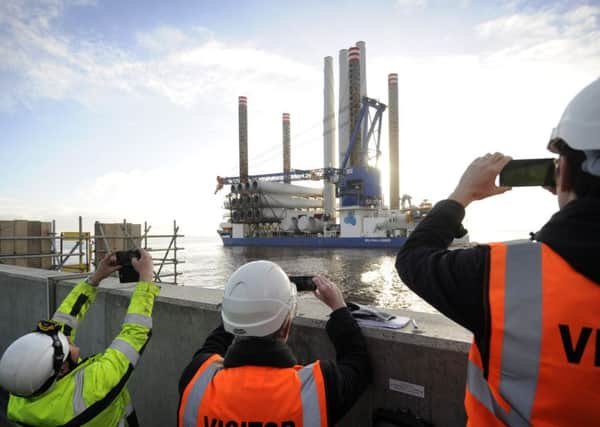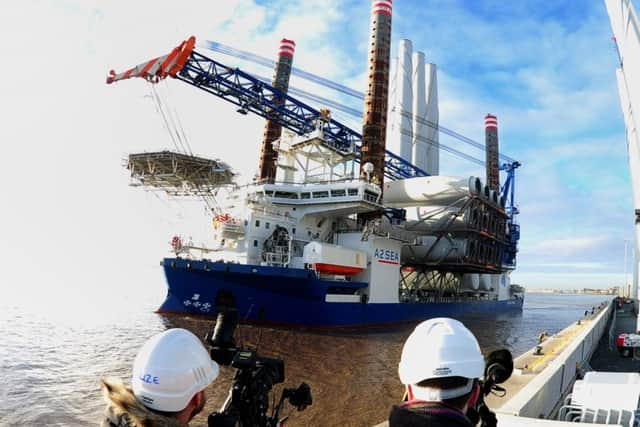First sailing of turbines from Humber


The Sea Challenger left Alexandra Dock bound for the Dudgeon wind farm 30 miles off the Norfolk coast, carrying 5,000 tonnes of components and specialist lifting gear.
Stacked three up and four wide, were the mighty 75m blades, along with four towers, standing upright and their two-storey high nacelles, which converts the blades’ rotation into electricity.
Advertisement
Hide AdAdvertisement
Hide AdAlso on board is a 900-tonne crane which will be used to install the towers directly onto foundations already laid on the seabed. The components were all imported from Germany and Denmark before being assembled outside the Siemens factory and loaded onto the giant jack-up ship.


But from May 1, blades made in the Hull factory will be shipped out from the site to the Race Bank wind farm off the Norfolk and Lincolnshire coast.
The two giant ships needed to carry turbines for the two projects will become a familiar sight on the Humber as they go out to the North Sea and return every four to five days.
Barry Denness, who runs the Siemens offshore operations in Hull, said it was “fantastic.”
Advertisement
Hide AdAdvertisement
Hide AdHe said: “This is the culmination of three years of planning and hard work, to see the vessel go out with the first set of wind turbines is fantastic.”


The Hull factory will also supply blades for the massive Hornsea wind farm, one of the biggest in the world, which will start to be installed in the first quarter of 2018. Hornsea Project One will span an area of over 400 square kilometres - over five times the size of the city of Hull.
The final recruitment is taking place of 140 factory workers at the Siemens factory, who will be the final shift to be taken on, making it a 24/7 operation employing 1000 staff in all.
Once the ship reaches the site, it lowers its support legs making a stable platform from which to instal the towers (420 tonnes) the nacelles (350 tonnes) and the blades (28 tonnes). One turbine can be put up in just 24 hours.
Advertisement
Hide AdAdvertisement
Hide AdCouncil leader Steve Brady welcomed the development: “Obviously it is a sign that Siemens is here and is here to stay. It is the river reinventing itself as it always has done.”
Siemens has a full order book for up to three years to supply blades for orders in the North Sea.
There had been hopes towers would be manufactured locally.
But it was announced last month that Siemens had agreed to take towers which will be built at Campbeltown, on the west coast of Scotland, following a multi-million pound investment by Dong Energy.
Towers will be transported to Hull, where they will be loaded onto ships, bound for the Hornsea wind farm.
Advertisement
Hide AdAdvertisement
Hide AdSea Challenger is part of A2SEA’s specialist offshore wind farm installation fleet, owned by Dong Energy, with Siemens as a majority shareholder.
Just short of 6GW of offshore wind is already installed in UK waters, with a total of 10GW expected by 2020. In the longer term, a further 10GW of offshore wind is planned.